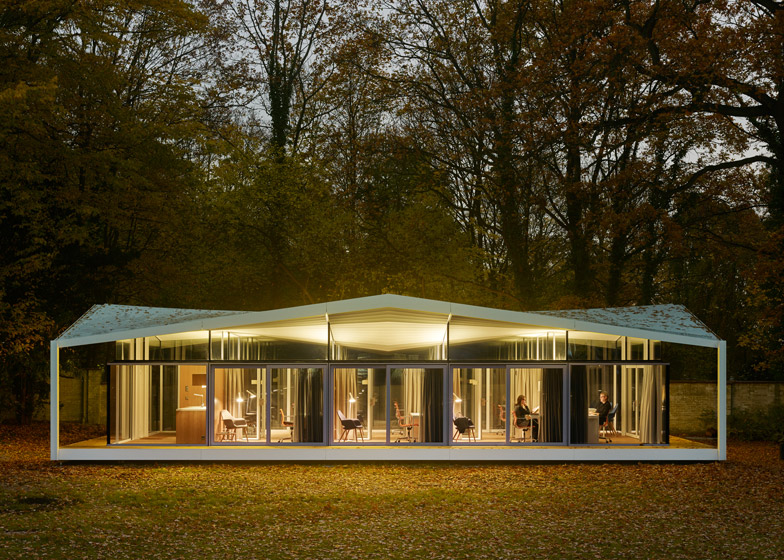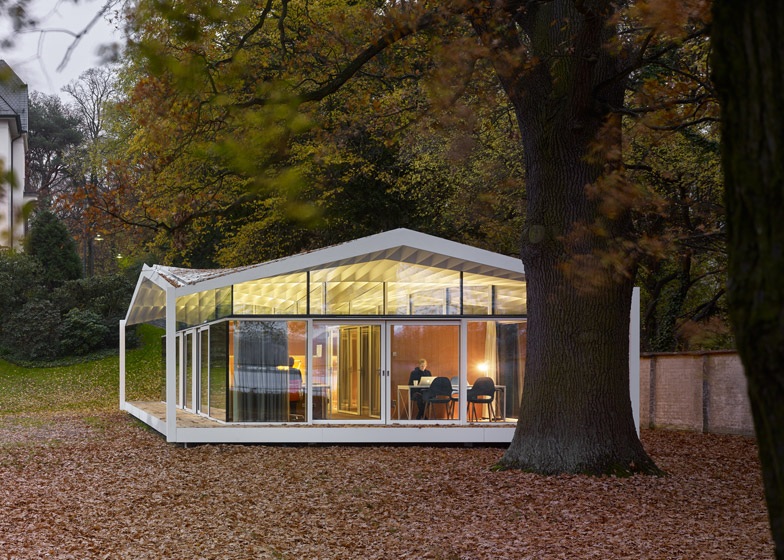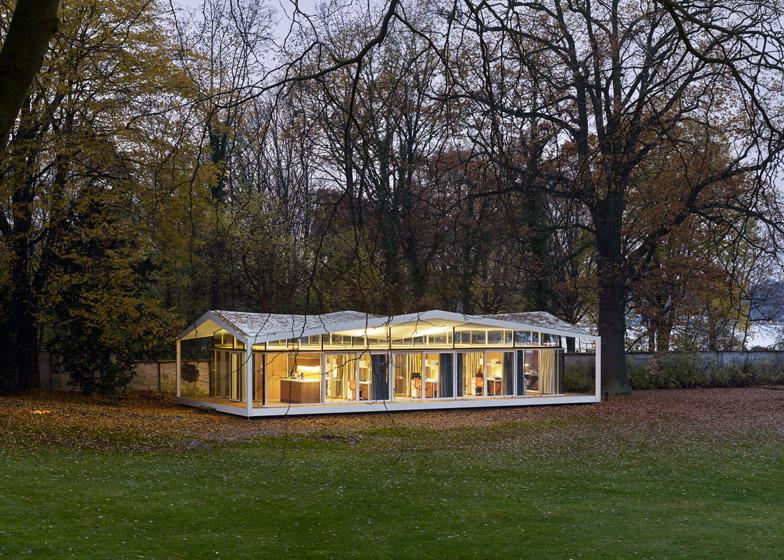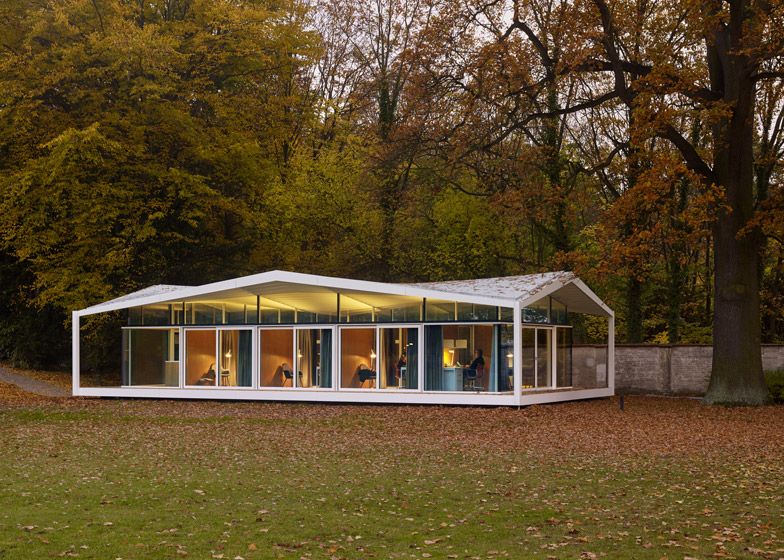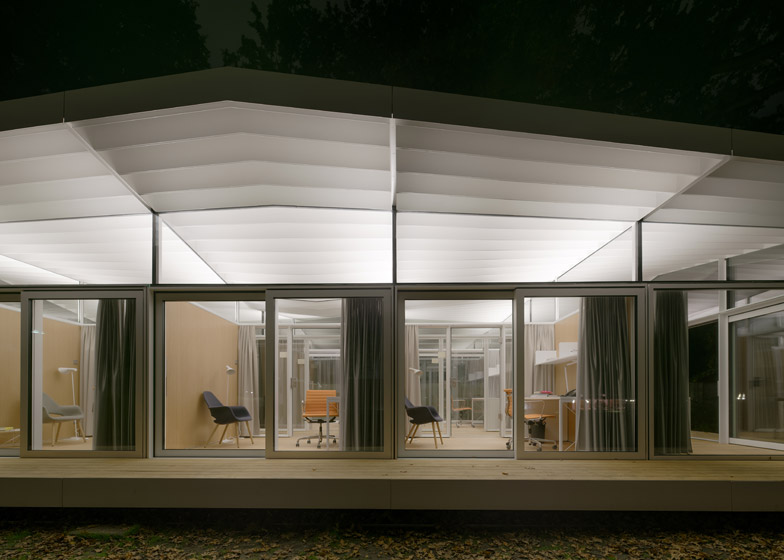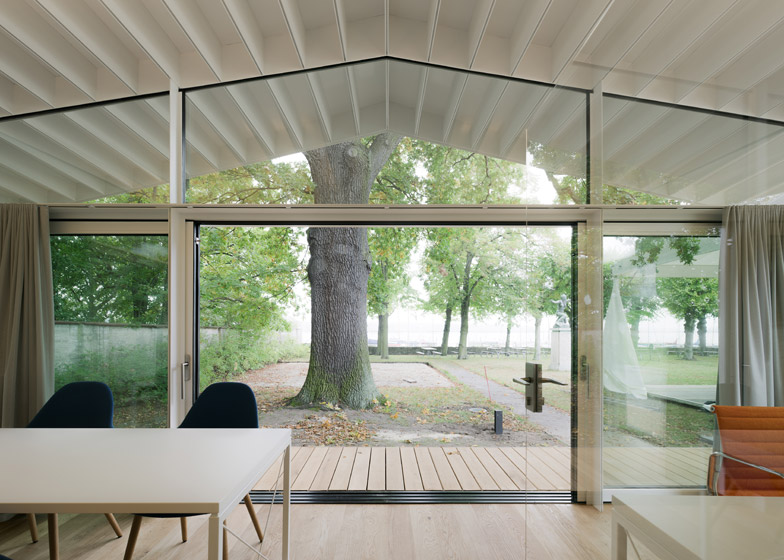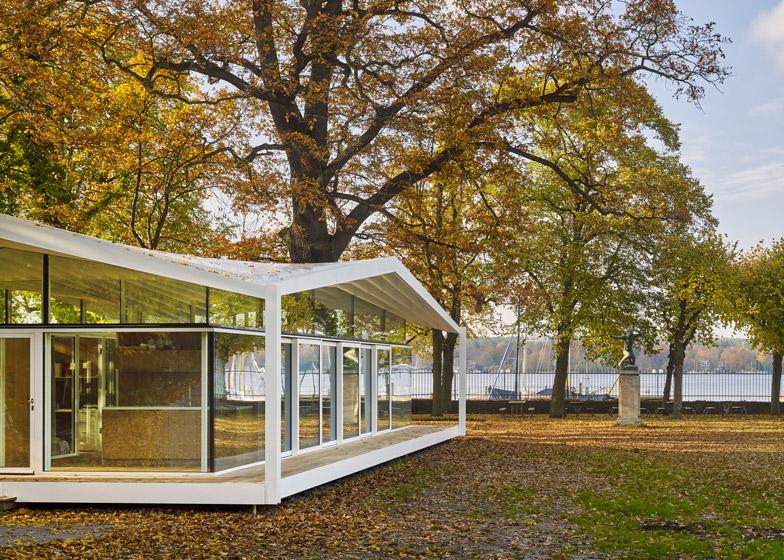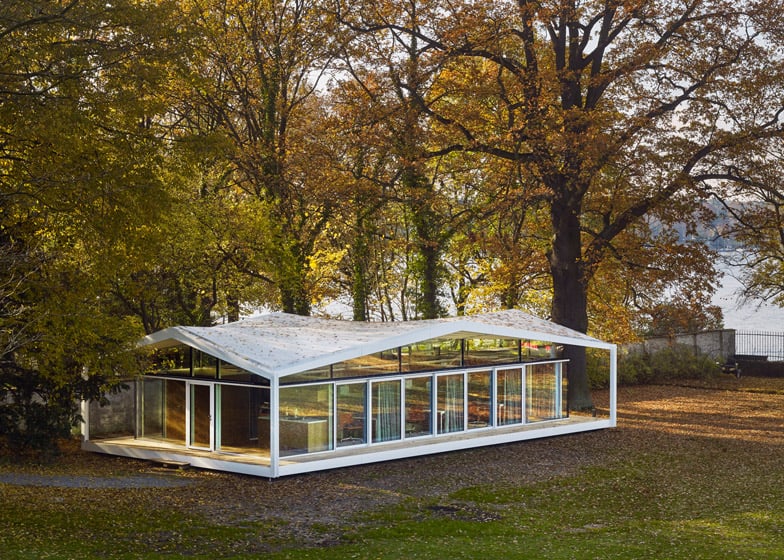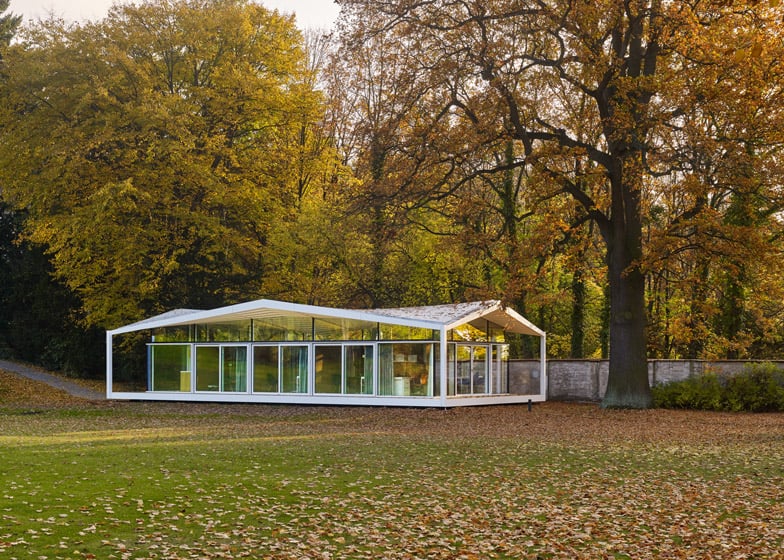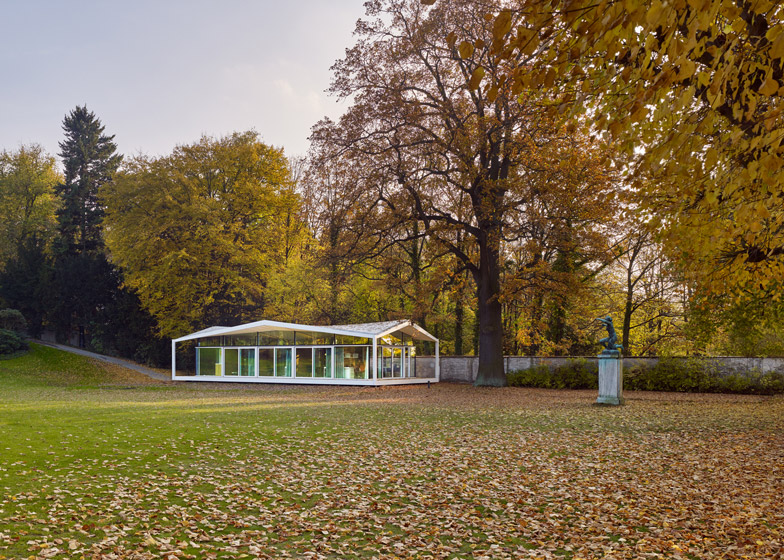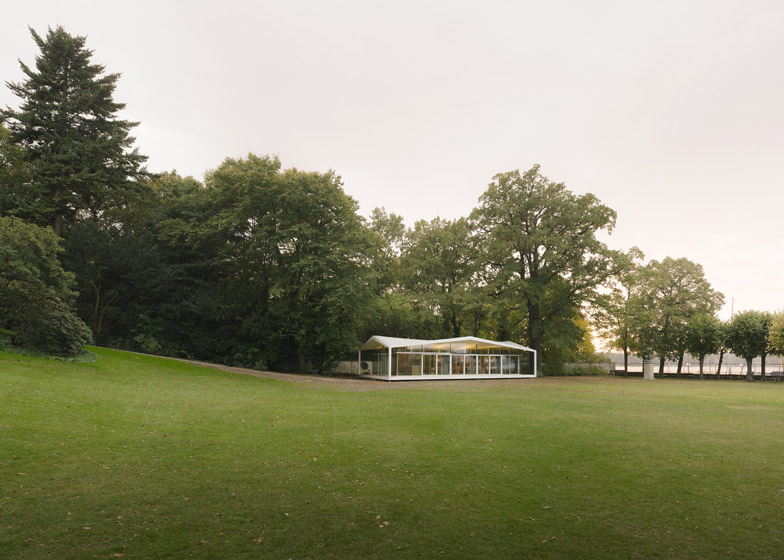This glazed garden pavilion by architecture studio Barkow Leibinger offers scenic study spaces for resident fellows at the American Academy in Berlin (+ slideshow).
American architect Frank Barkow and German architect Regine Leibinger were asked to create the study pavilion in the lakeside grounds of the Berlin institution – which was established in 1994 to help foster relationships between Germany and the United States, and which counts playwright Arthur Miller and artist Jenny Holzer among its alumni.
The resulting Fellows Pavilion boasts glass walls inside and out, a looping veranda and an angular roof made up of hyperbolic paraboloids.
A plot housing a disused bathhouse provided a site for the single-storey building. Facing a lake in Berlin's Wannsee area, it sits at the south-west corner of the gardens that surround the academy's home inside a 19th-century villa.
The lightweight glass and steel structure comprises a skeletal outer frame and a transparent central box. Its roof angles up and down to create gables on all four elevations.
"The form of the pavilion's roof is a result of 'ruled geometry' – offset straight lines rotated to produce four hyperbolic paraboloids, a shape that is both abstract and familiar, since it reflects, if only in elevation, the gabled roof of the historical villa," said Barkow Leibinger in a statement.
"The distinctness of the pavilion is further enhanced by both its seeming to 'float' above the garden's green lawn, and its dominant white colour."
The interior is broken up into a simple grid, creating eight rooms. Six study spaces, each with an area of seven square metres, run through the middle. A larger group study area sits at one end, while the other end houses a kitchen.
Glass doors allow every room to be opened out to the surrounding veranda, which is also sheltered beneath the roof. A mid-19th-century sculpture sits nearby.
"An existing sculpture by Georg Kolbe, 'Verkündigung' (1937), gestures to this new pavilion, recalling Kolbe's 'Der Morgen' (1925) at Mies van der Rohe‘s Barcelona Pavilion," added the team.
Walls between rooms and the central corridor feature even more glazing, but can be screened behind curtains for privacy, while high-level windows allow light to travel through the entire interior.
A steel platform covered in oak planks provides a durable flooring surface both inside and outside the building. The roof is supported by four I-beam columns, which integrate rainwater drainage.
Photography is by Stefan Müller, apart from where otherwise stated.
Project credits:
Architects: Barkow Leibinger
Project architect: Tobias Wenz
Team: Gustav Düsing, Ulrich Fuchs, Annette Wagner
Structural Engineer: Hörnicke-Hock-Thieroff (HHT)
Mechanical Engineer: HDH - Ingenieurgesellschaft für technische Gebäudeausrüstung
Landscape Architect: Capatti Staubach

